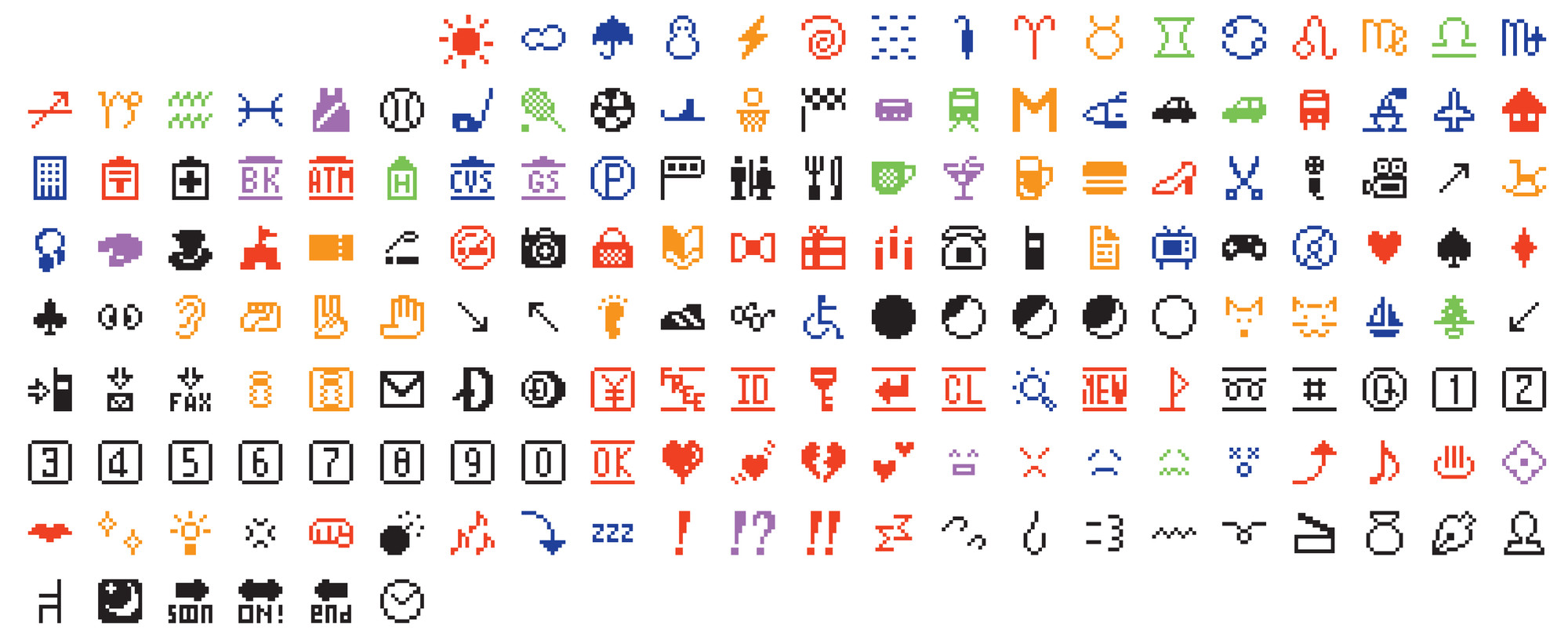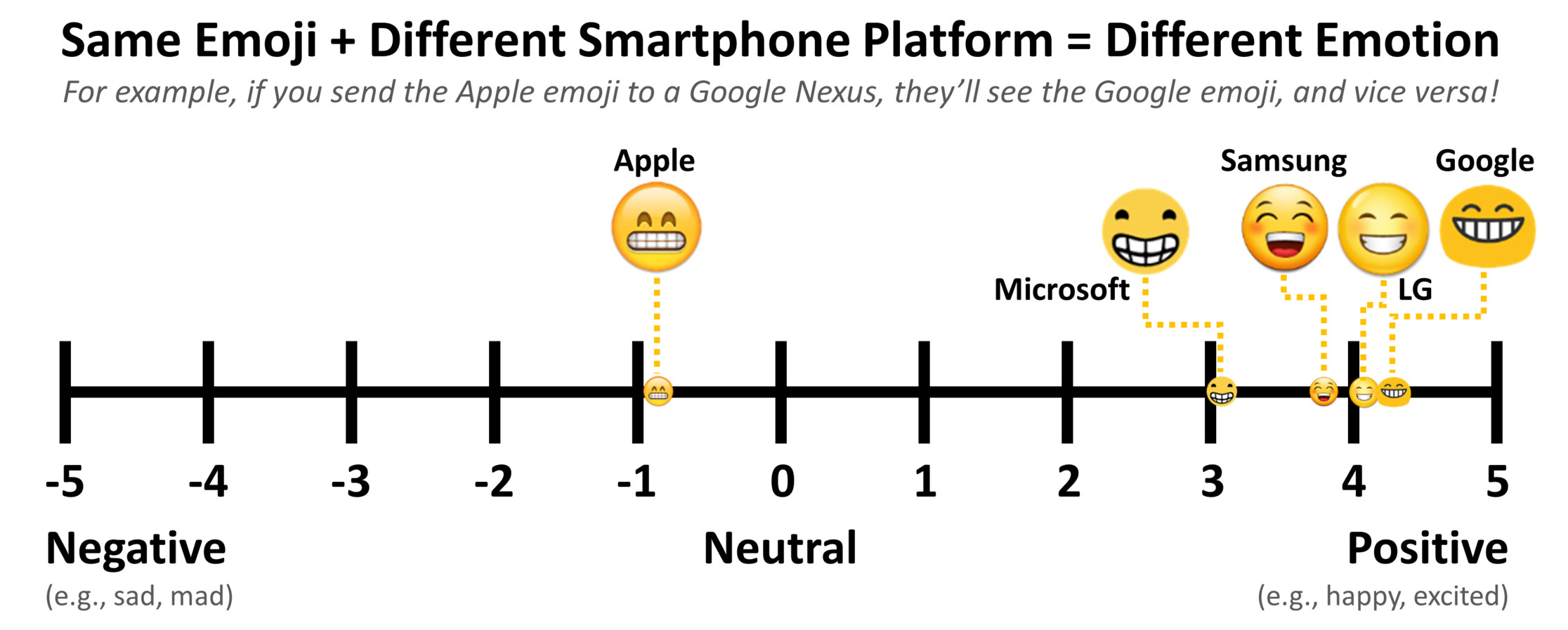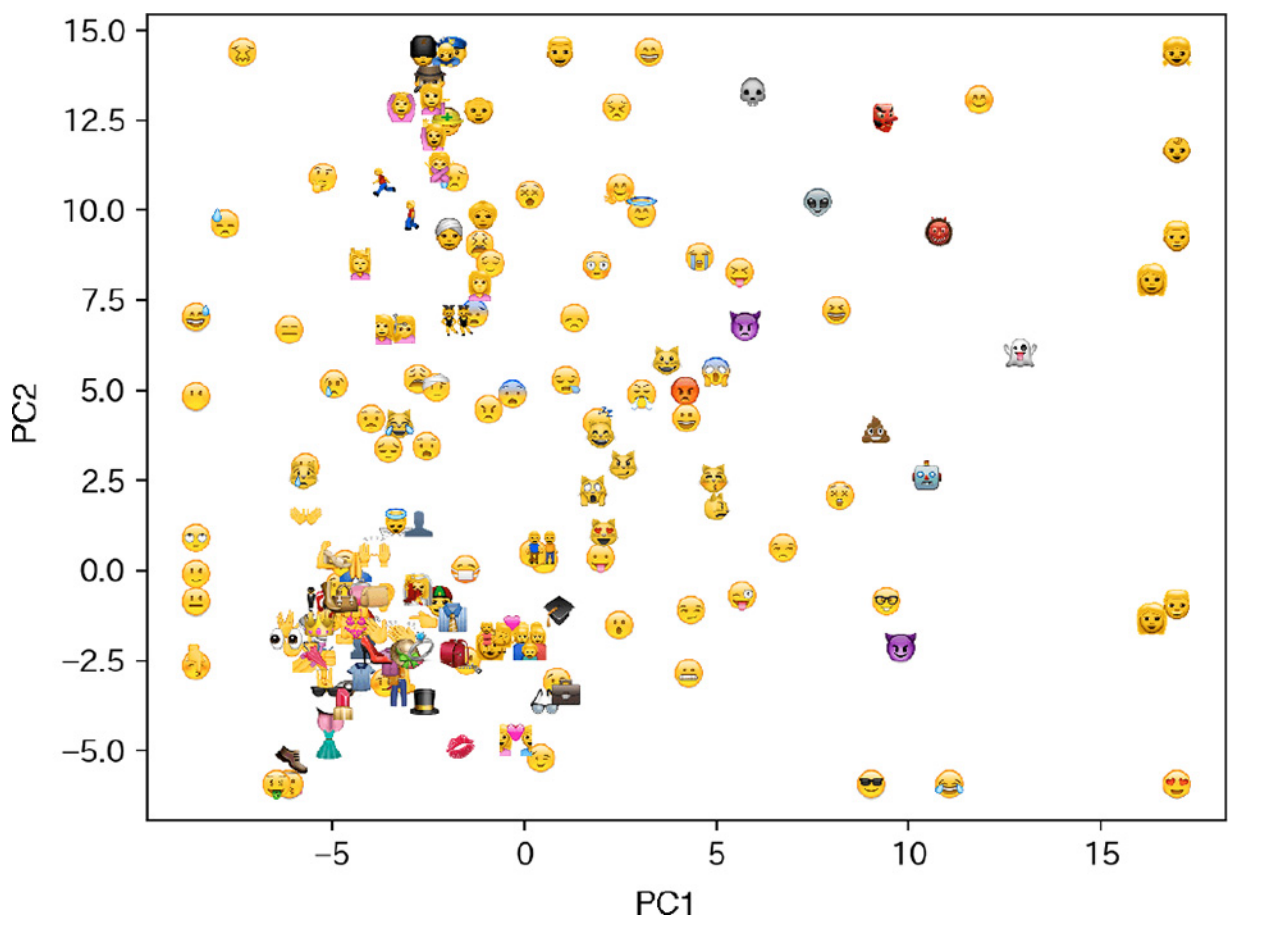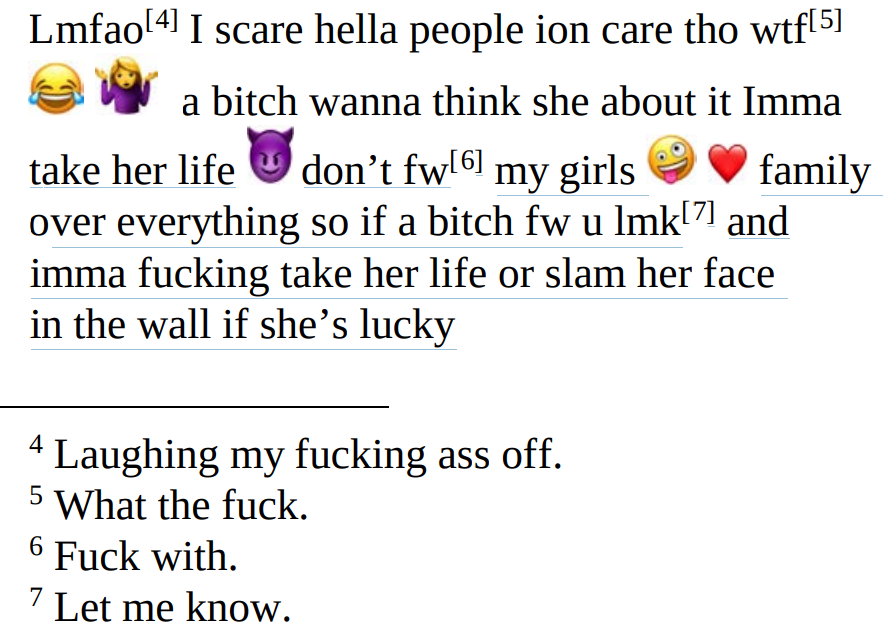Emojis are hard to interpret, and judges are having headaches 🤕
Have you seen this crying face 😭? How about 😂, 🥺, 🤣, or ❤️? Are you familiar with those colorful pictograms? Well, you should be. According to emojipedia, they are the top 5 most used emojipedia on Twitter in 2021. By December 2021, a total of 21.54% of all global tweets have at least one of the 3,633 emojis approved by the Unicode Consortium
Given the popularity of emojis, it is not hard to envision that one day in the courtroom, judges will have to examine evidence in the form of emojis, and someone will be fined or sent to jail for sending certain emojis. Okay, it has already happened in both civil and criminal cases worldwide. And let me tell you this: although it’s funny to communicate in emojis, it’s not funny anymore to see emojis appearing as evidence. Because emojis are hard to interpret, they have caused a lot of evidentiary issues 😱!
From XD to 😂
We shouldn’t blame emojis for being hard to interpret, as emojis are designed to be so.
In our daily face-to-face conversations, we often make use of body language, facial expression, or acoustic tone
Emojis are standardized collections of pictorial glyphs that are highly expressive. Originated in Japanese 絵文字, the name emoji itself precisely illustrates its pictographic nature: 絵 (e) being “picture,” while 文字 (moji) being “character.” Unchained from the 256 ASCII character limitation, emojis offer a virtually infinite array of expressions.

Emojis easily expand outside the territory of Emoticon’s facial expression and extend to gestures🤞, fantasy 🧚♀️, clothing 👘, food 🍮 or even slot machine 🎰. It is not hard to see that asides from being semantically richer, emojis are more colorful, vivid, intriguing, and expressive compared to Emoticon.
Equipped with such benefits, emojis gradually become an integral component in postmodern languages throughout the world. It is estimated that 92% of the online population use emoji, and at least 2.3 trillion mobile messages incorporate emoji annually as of 2016
If 🤣 isn’t your most frequent emoji used stay farrrrrrrr away from me
— kuz (@kylekuzma) June 22, 2022
Yet, emoticons and emojis serve similar functions: articulating and emphasizing the author’s intention. As I will illustrate below, emojis, similar to the natural language we have been using, are highly contextually and culturally bounded. As a result, they are subject to reinterpretation and/or misinterpretation.
Emojis obey distributional hypothesis 🧐
We’ll probably agree that natural languages have a lot of nuances, and it is difficult to tell the meaning of a word without knowing the full context. In the 1950s, a linguist John Rupert Firth propose the distributional hypothesis, meaning that the precise definition of a word is “characterized by the company it keeps.” As emojis are now playing an extensive role in communication, they more or less obey the distributional hypothesis, i.e., emojis are highly contextual. For example, 😎 can mean “it’s cool,” “job done,” and “sunny day it is,” to name a few.
I once wanted to research with a professor at USC and wrote a long email expressing my eagerness and competency. In the end, I wanted to “appeal to the pathos.” I hoped to implant a sense of emotional intimacy, making Professor harder to refuse my inquiry. “Hey, we all belong to the Trojan family,” I thought. What can possibly be more idiomatic than the school slogan? I typed “Fight on✌️!” at the end of the email. (by the way this is also the favorite emoji in USC!)
Let me do a quick dissection of what ✌️ means. I am a USC student. USC Students tend to do a V sign when saying the USC slogan is “Fight on.” I am writing to a professor at USC. You probably already see this: Trojan’s slogan “Fight On” is embedded in a simple emoji ✌️. It is the context regarding USC that injects this particular meaning into ✌️. For someone unaware of the whole context, ✌️ would mean nothing more than a V sign.
The different implementations of emoji standards in various platforms add another layer of complexity. You might think you send a laughing 😁 emoji to convey a positive signal, but the receiver might think you are feeling embarrassed and awkward if the receiver happens to have an IPhone.

Emojis are cultural constructs 🤔
Don’t you like emojis? Don’t you think adding a cute emoji makes the conversation more friendly 🙂? Not if you are speaking to a Chinese. One time when I sent a meme to my American friend, he replied to me with “funny 🙂.” Then as a Chinese, I began to question myself if I had done anything wrong to him since we Chinese only use smiling faces as a subtle indication to convey mock and despise.
As emojis reach millions of internet users throughout the globe, people from different regions develop different tastes in emoji usage. For example, asides from 🙂, clapping hands 👏 in China means something erotic, and in Brazil and Turkey 👌 is equivalent to a middle finger. Adobe report shows 63% of Gen Z’ers mention that they use emojis differently than their intended meaning, with the most misunderstood emojis being 🍆
The cultural construct aspect of emojis is also being studied quantitatively. Researchers at Princeton and University College London have trained a neural network on English Tweeters and project a list of emojis into a 2D Cartesian plane


They credit the disparity in emoji semantic similarity to the difference in emoji culture. They found that for the same sentence Japanese sometimes react in a different emoji, as the table below shows. The Jp colomn is what a typical Jpanese will react for the given sentence, while En colomn is the response of a typical American.

The room where it happens ⚖️
It’s presumably fine that the interpretation of an emoji is conditioned on the person who sends the emoji, the cultural understanding of the emoji, and the context where emoji is used, because after all natural human language is no better. But in the courtroom, in which the precise meaning of each emoji needs to be rigorously scrutinized, emojis become a constant headache to judges due to their subtle sense that is hard to decipher. For example, if my coworker sends me a ❤️, does it constitute sexual harassment? If my husband sends me a 🔪, does it imply a life threat?
Emojis invade courtrooms… It’s a real thing❗️
Despite being relatively new, emojis have blossomed a millionfold with the advent of the computer era. Eventually, they also gained prominence in the courtroom. Recent years have witnessed a rise in cases involving emojis as evidence. According to Santa Clara Law professor Eric Goldman, back in 2004 there was only one case involving emojis, and the number went above 100 in 2019.
Judges are tasked to interpret the meaning of emojis to grasp the author’s intention behind those colorful pictograms. A final judgment will then be made based on their understanding of the emojis. The definition of emojis is however subjective. The existing emojipedia is far from satisfaction, as it provides explanations purely from the designer’s perspective. Given the complexity of emojis as a social and cultural product, the judgments are often controversial. Sending a Chinese 🙂 would make the Chinese somewhat uncomfortable. This is a personal consequence of the complexity of emojis. What about legal consequences? What if you are fined or sent to the jail just because the understanding of some certain emojis are deviated?
💃👯♀️✌☄🐿️🍾 conveys great optimism?
Image yourself as a landlord; what will you think if you receive the following message from a prospective tenant:
“Good Morning😊 Interested in the house 💃👯♀️✌☄🐿️🍾 When’s a good time for you?”
A married couple Nir and Yarden sent precisely this to the landlord After reading this message and firmly believing that the couple had expressed a strong passion for the house, the landlord decided to take down the apartment listing from the market and send messages back to Nir and Yarden regarding the details of the housing contract. Yet the only response he got from the couple after a few days is that they instead rented another apartment.

Agitated, the landlord sued the couple for damages, claiming reliance —special contract law in Israel, that a party acting in reliance on another’s expressed, and sometimes implied intent to agree to a deal may file suit if damaged when the other party doesn’t follow through. How will you judge this case? The couple never explicitly confirmed that they would rent the house; they only asked to schedule a meeting with the landlord and had never signed any contract. However, the ruling by Judge Amir Weizebbluth is quite the opposite. He argued that this text message full of pictograms, smiling face 😊, dancing 💃👯♀️, and Champagne🍾 all convey “great optimism.” He further claimed that
Although this message did not constitute a binding contract between the parties, [it] naturally led to the Plaintiff’s great reliance on the Defendants’ desire to rent his apartment…
With the positive signal, the landlord’s decision is understandable, if not perfectly reasonable based on the couple’s optimistic and colorful language. In the end, Nir and Yarden had to pay $2,200 for the bad faith negotiation. At first glance, this seems somewhat arbitrary that several emojis would cost two grand. I would rather consider those emojis a more approachable rhetorical technique, similar to what I have done when sending “Fight on✌️!” to my Professor. None of those emojis are equivalent to the couple’s agreement for the contract. Besides, what does squirrel 🐿️ have to do with positive anyway? Due to the controversial outcome, this case became a classic in lawsuits that involve emojis, arousing debate on whether such complicated components as emojis can be used as convincing evidence.
Calling someone 🐵 is an insult?
Consider the following outrageous case happened in German where two employees were accused of insulting two managers in the company. Here is an excerpt of the chat history between the two employees
Employee 1: The fat 🐷 goes crazy!!! 😜😜😜
Employee 2: You mean the piglet roasting on a spit!!! 😭😭
Employee 1: Hahahah
Employee 2: “And the 🐵head too!!! 😂😂😂😜😜
While the first “fat 🐷” is rather obvious, the phrase “🐵head” gathered much attention from judges. Calling someone monkey head is probably not the most polite term one should call the manager. Still, hey, I have seen many posts using 🐵 to refer to a human, for example, this one:
Rough Translation:
— พี่หยิ่นและน้องวอร์ (Rest) (@Anonymous_2710) July 1, 2022
🐷- Did you receive your birthday gift from Yin?
🐵- No I'm still waiting. But I can guess what it is.
🐷- Can it be a ring?
🐵- I'm most likely sure it's not a ring
Video credit:@/onlywar_yw#warwanarat #yinyin_anw #หยิ่นวอร์#6thyearUNIQLOOnline pic.twitter.com/1H2Difu4ja
Later in the assessment, it seems that the two employees mistakenly perceived monkey 🐵 as bear 🐻, since on their mobile phone screen the two look similar.

The judge concluded that calling the manager bear head is considered an insult, given the manager’s broad facial features. In other words, the employees are actually deliberately making fun of the manager using the emoji of the bear. In this case, it seems that It is not the emoji itself that judges look for, but how the employees perceive this (although deviating from the standard norm) that became the evidence judges utilized for the claim of insult. Rather inconsistent with the case of poor couple Nir and Yarden.
I guess you should always append a 🤣 just to play safe
Emojis can be evidence of insult but can also turn an insult into jokes. I’m going to show you an excerpt from a daughter’s text message to her friend. Her mom was frightened after seeing this message, believing that her daughter wanted to kill her mother
Lmfao I scare hella people ion care tho wtf
a bitch wanna think she about it Imma take her life
don’t fw my girls
family over everything so if a bitch fw u lmk
and imma fucking take her life or slam her face in the wall if she’s lucky
What do you think? The judge believes that there is “no indication [the daughter] ever threatened her monther directly”. Do you agree?
Oh I forgot to add the emoji. This is the actual content

Do you think this will make a difference? The court’s decision is mainly based on the examination of emojis. They believe the content was “vaguely worded and peppered with smiling emojis.” In this case, if a judge completely omits the emoji, he probably will make a different judgment. Indeed, what if this text message is read or described by the lawyer to the judge?
Can we compile a list of evil emojis 😈?
Not all emojis are created equal. Some emojis are more likely to get you arrested. In 2016, there was a 12-year old that got arrested after posting on Instagram with 🔫🔪💣 emojis. However, this “might get you arrested” list of emojis is not exhaustive. Even an innocuous and neutral emoji can be found threatening in a particular context.
For example, a judge sent a woman’s ex-partner to jail for eight months for sending the following message to the woman’s social media account:
You’re going to f***ing get it,✈
Even though the aeroplane is considered harmless in most cases, in this scenario, both woman and the judge agree that this is a symbol of threat, suggesting that the ex-partner is coming to her. It seems we have left the situation puzzling about what those little pictograms mean when deriving from context. It is hard to gain a universal consensus about whether they indicate a sense of anger, humor, or other emotions, which probably is not what the inventor of emojis envisions emojis to be.
Q: What is the best way to interpret emojis? A: 🤷, but 🤞
I have demonstrated to you the difficulty in evaluating and interpreting emojis as they are culturally and contextually defined. I also have shown that emojis have proposed new challenges to judges in the courtroom. Their judgments will partially depend on their definition of emojis. Given that judges’ decisions will have a direct impact on the people, a careful and systematic evaluation of emojis is required.
However, it is also assuring to see that many courts have to take action. In the US, works have been proposed to provide systematic interpretation and rules to prevent jury confusion. Similar idea occurs in China as well. Fighter cross 🤞and let’s hope that in the future judges will have fewer headaches dealing with emojis!